From a Textile Village to the Church on the Hill
The Blackstone River powered the machinery of those textile mills that brought the Industrial Revolution to America. One such mill owned by Samuel Mann (or Man), who gave his name to the village of Manville in which his mill was located. Here, as in the other new mill villages that spread upriver from Samuel Slater’s original mill in Pawtucket, itinerant revivalists rather than settled churches provided only sporadic religious services for the workers in these early factories. Mann, himself a Quaker, found these “enthusiasts” distasteful and sought to replace them with a “sober religion.” He was clearly concerned not only for the souls of his workers but also for the discipline of his workforce when he wrote in 1835 to the Episcopal Bishop of Rhode Island to request a missionary. He offered to provide for the missionary lodging in a mill house, two new suits of clothes a year, and a salary of $300, to be collected at the mill’s pay window at the rate of $6 a week. He also promised ongoing financial support for the building and maintaining of a church. In 1836, the church received a State Charter under the name “Emanuel Church at Manville, Smithfield.” The bishop sent The Reverend Ephraim Munroe to answer the call.

Emmanuel Church, Manville, RI
If some of these early operatives had emigrated from England, they had not been Anglicans there any more than their Yankee counterparts had been Episcopalians here. Munroe found his congregation largely unfamiliar with the Prayer Book and uncertain how to use it. He could be sure, however, of a captive audience for his Sunday afternoon service because Mr. Mann himself attended and noted any absentees, who would next day be summoned to explain their whereabouts. On Sunday mornings teachers instructed the children in reading and writing using the Bible and available primers; the only schooling these children would get, for they too labored in the mill along with their parents. Munroe claimed success in getting increasing numbers of the congregation to use the Prayer Book and participate in the services though the numbers of actual communicants remained very small.

Emmanuel Church, Manville, RI
From that hopeful beginning the church carried on, experiencing periods of gratifying growth as well as dispiriting declines, which often coincided with a rather rapid turnover of Rectors or a period when the pulpit was vacant. It survived the vicissitudes of 19th-century economic depressions, the Civil War, and a large influx of Roman Catholic French Canadians in the 1880s. It had always through this long period depended on the mill owners’ continuing financial support.

Emmanuel Church, Manville RI
The Great Depression of 1929, however, bankrupted the Manville-Jenckes Mill, leaving the church to struggle through a very difficult time. It nevertheless celebrated its centennial in 1935 in the presence of the Right Reverend DeWolf Perry, who was not only Bishop of Rhode Island but also the Presiding Bishop of the American Episcopal Church. After World War II, however, the downhill trajectory resumed and membership sank to new lows.
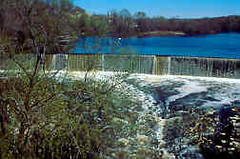
The Blackstone River in Manville, RI
Moving across the River
Meanwhile, across the Blackstone River in Cumberland Hill was an area experiencing rapid growth and was deemed an appropriate site for a new mission. To this Church of the Incarnation came The Reverend Walter Lyons, who conducted the first service of the new mission on 20 July 1958 at Cumberland Hill Elementary School.

Less than a year later he could present to Bishop Higgins a group of 25 to be confirmed and received into the church, even providing for the women and girls in the group the white veils deemed appropriate for the ceremony.
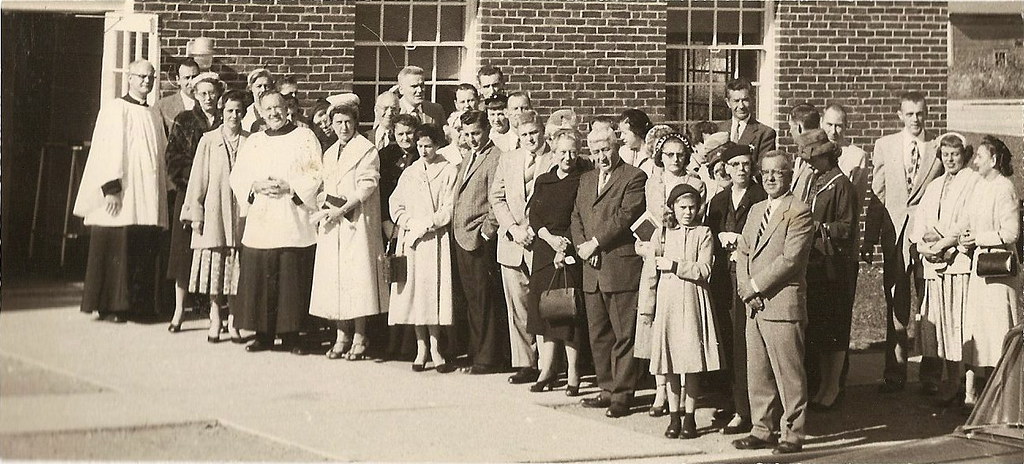
The mission was at that point without a church while the church in Manville had received in 1958, for the first time in 23 years, an extensive redecoration. The two churches decided to merge as the Church of Emmanuel and the Incarnation, but, to avoid the expense of obtaining a new state charter, agreed subsequently to operate under Emmanuel’s existing charter of 1836 and to use its name. The first service of the joint congregations was held at Cumberland Hill School on 7 July 1959 but they now also could use the renovated church in Manville. The new church was thus able to celebrate as “Emmanuel” its 125th anniversary in 1960.
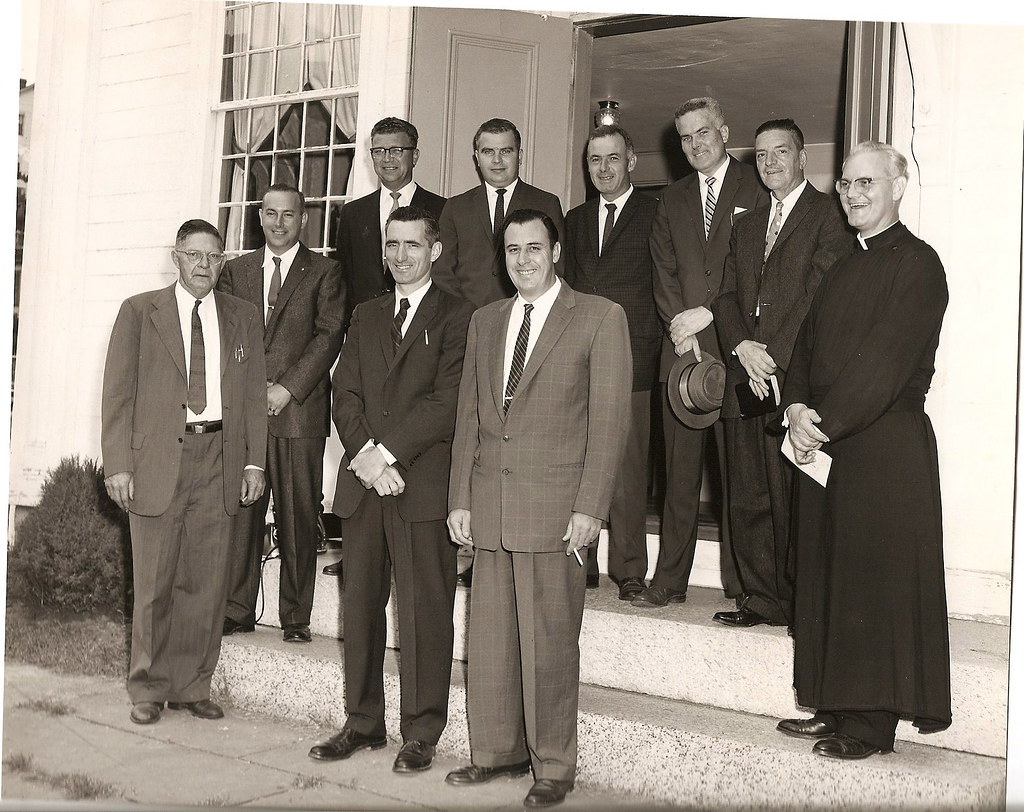
First Vestry Post-Merger Emmanuel Church and Church of the Incarnation
Building a New Church
At this point the Diocese intervened with the purchase of the present site on Nate Whipple Highway and a substantial contribution toward the cost of a new church. Records found at the Cumberland Town Hall indicate that the land was purchased for $1 from the heir, Ruth Cook, of the estate of Handel Cook. Work was begun on 28 August 1960 and on 1 March 1961 the new edifice was formally dedicated. With the completion of a parish house adjoining the church, the Sunday School could meet on the premises rather than having to transport to the children to the local school for classes.
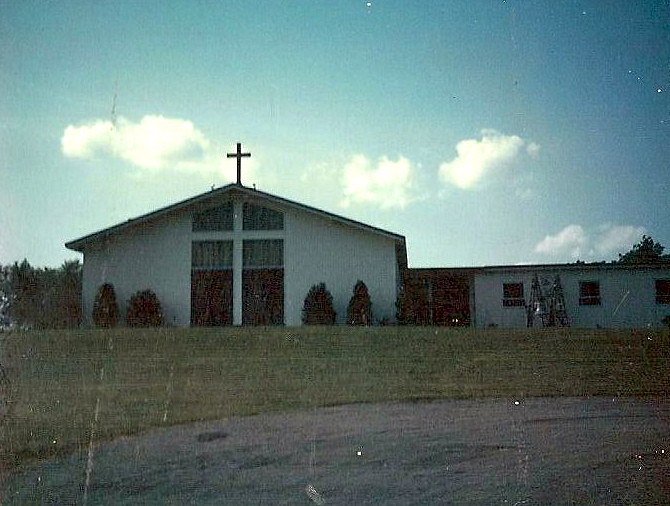
Emmanuel Church
Understandably the Manville parishioners were reluctant to leave their newly remodeled church but the new location was clearly more convenient for most parishioners.

Emmanuel Stained Glass Window
Both a stained glass window from Manville and the baptismal font were eventually incorporated into the new Emmanuel Church to retain continuity with that period of the church’s past. Thus established, the church grew and prospered in the ensuing decade.
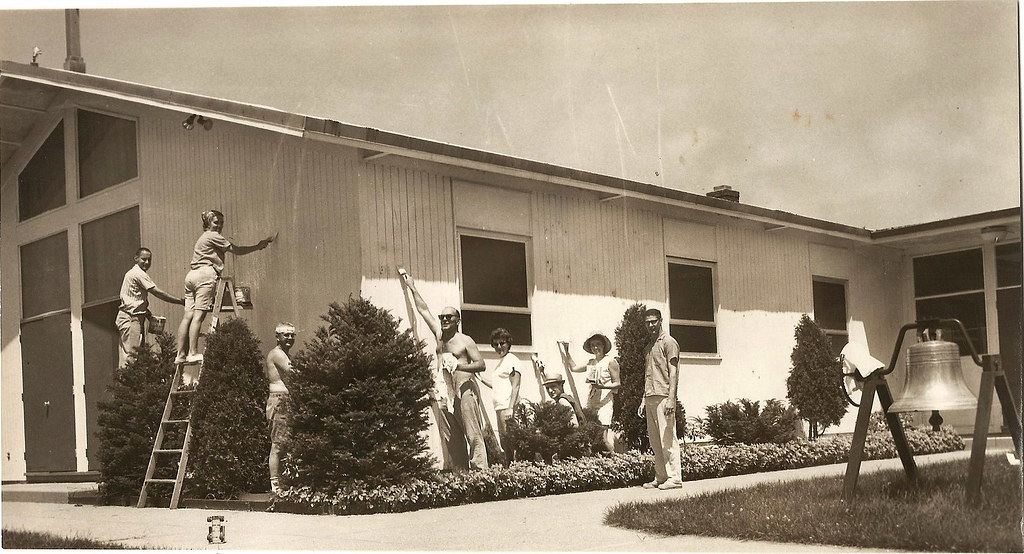
Emmanuel Church before the front addition
The Late 1900s and the New Millennium
The decade of the 1970s saw substantial developments both in the structure and status of the church and in the range of its activities. In May 1970 work began on a significant enlargement of the sanctuary to accommodate the growing congregation.
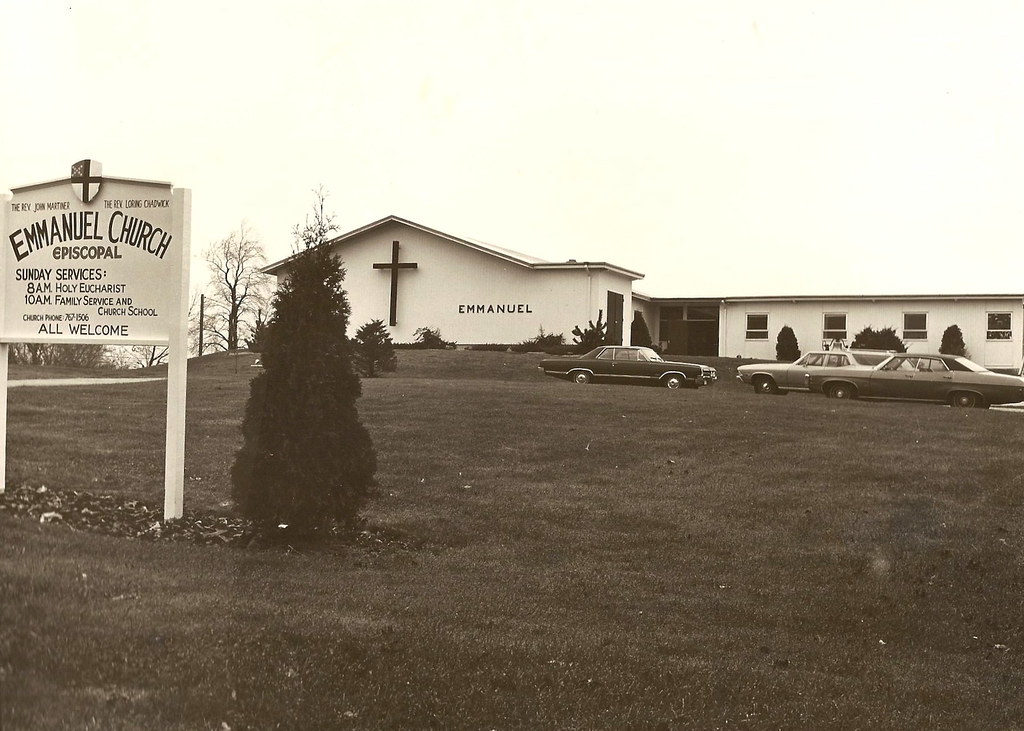
Emmanuel Church
It included a new entrance and narthex as well as additional space at the front of the church for the placement of a freestanding altar and choir pews that face the congregation. These pews came as a gift from the Berkeley Methodist Church of Cumberland, which was closing. In December 1972 the vestry informed the diocese that after January 1st the church could become self-supporting, thereby paving the way for its formal consecration on 17 October 1976.

The Reverend Robert Hargreaves
Under the leadership of The Reverend Robert Hargreaves, many in the church felt the influence of Charismatic Renewal and took an active part in the Cursillo movement. Others looked with some alarm at movements they feared might prove divisive. Music flourished under the direction of The Reverend Loring Chadwick, who not only directed the choir but also wrote music for it.
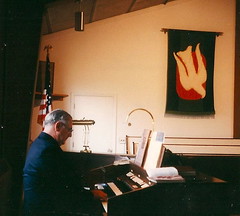
The Reverend Loring Chadwick
Around 1973 the church reached out to The Holiday Nursing Home by bringing a weekly Eucharist to the patients, a practice which continues to this day. The church also took the lead in supporting women’s ordination, approved by the General Convention in 1976, by welcoming the newly ordained Reverend Patricia Smith to celebrate her first Eucharist.
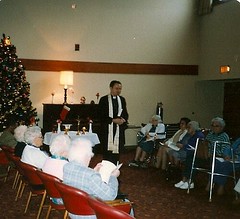
The Reverend Alvin Burnworth
The Reverend Alvin Burnworth succeeded Father Hargreaves in 1984 and served until 1992. A couple of years after he came, the church staged several memorable events, including a float in the traditional Arnold Mills Fourth of July Parade, to celebrate the parish’s 150th anniversary. During his tenure he inaugurated a ministry to the deaf, for he was proficient in American Sign Language and could use it in the service. Emmanuel also hosted from 1983 until 1998 Project Accord, an outreach ministry to the mentally handicapped designed to help them resume a place in mainstream society. The Reverend Raymond Maloney, who with his wife, joined Emmanuel during this period. After Bishop George Hunt accepted his ordination into the Episcopal Church, Father Maloney often assisted in the services and provided general support for the ongoing work of the church.

Emmanuel Church 1991
In 1991 the flat roof of the parish house was raised and given a peaked form to eliminate its tendency to leak and to provide potential added space. Also in the 1990s the Em-man-uelites, a men’s group, came into being and continues its semi-annual spaghetti dinners, much-anticipated gatherings for the wider parish community. Father Burnworth’s ministry produced controversy and division within the church that resulted in a drop in pledging units insufficient to support a full-time Rector. His departure left the church very much in need of a time of healing. The church prospered during this interim period due to the steadfast lay leadership the church enjoyed and the pastoral guidance of the Reverend Deacon Edward Trafford and The Reverend Robert Muir.

The Reverend Rebecca Blair
In 1995 The Reverend Rebecca Blair came to Emmanuel, becoming its first woman Rector. In the face of a considerable increase in membership, especially of families with young children, the Sunday School got a major overhaul of its curriculum and organization and a children’s choir was begun. The newly-hired Christian Education Director of the Deanery not only provided added resources for the Sunday School but set up a Vacation Bible School in which Emmanuel’s children could participate along with others from the Deanery. Emmanuel Nursery School expanded to include a liturgical Christian curriculum for the two-day program and a summer program and extensive work was done to combine and computerize church and nursery school budget and financial accounts. An extended stewardship program was launched which included care of the building and grounds; and a weekly toddler bible class program was begun.
Rebecca Blair left Emmanuel in 2003, she was succeeded by Rev. Susan Stiles as Interim Rector. Under her guidance the church continued to flourish. She promoted our spiritual growth both in formal worship and informal group discussions of such issues as meditation and end of life decisions. The church’s ministries continued strong as did its outreach that was broadened to include opportunities for parishioners to contribute to the Heifer Project in developing countries. She played a vital role in the lengthy process of choosing a new Rector and preparing both him and the parish for their new ministry

The Reverend Peter Mayer
The Reverend Peter Mayer came to Emmanuel in 2005, conducting his first worship service on Pentecost Sunday. His dynamic, energetic, informal, and humorous style enabled him to mobilize Emmanuel’s strong sense of community to promote a vision of the church as partner with God in healing the world. To that end he strengthened the church’s ministries and expanded its membership in order to pursue our vision of nurturing spiritual development and actively serving the larger community. With a larger membership it was not only possible but also necessary to provide more space and renovate the existing space. Launching a Capital Campaign in a time of recession was not easy but the initial funds available have enabled us to complete some essential renovations to improve handicap accessibility.
After Reverend Mayer resigned in July 2010, Fr. Don Parker became the Interim Rector. The church faced financial problems both immediately and in the longer term as well as the need to begin the search for a new Rector. The possibility of a merger with Christ Church, Lonsdale was canvassed as a benefit for both churches. Although Emmanuel approved the merger, the proposal failed to get the additional support necessary to proceed. Those who voted for the merger from the other parish wanted to stay together, so they brought their passion and faith down the road to Emmanuel. The earlier search for a new Rector was resumed, and Emmanuel embraced the influx of new members under the leadership of The Rev. Donald Parker, Interim Rector and The Rev. Melody Shobe, Associate Rector.
In March 2013, the search for a new rector culminated with The Reverend Joan Testin joining us at Emmanuel. The celebration of her new ministry at Emmanuel took place on Father’s Day, June 16th, 2013.
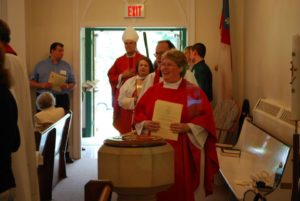
RECTORS OF EMMANUEL EPISCOPAL CHURCH
MANVILLE (1835-1958)/CUMBERLAND (1958-Current), RHODE ISLAND
1. Rev. Ephraim Monroe 1835-1838
2. Rev. Samuel Penny, Jr. 1840-1845
3. Rev. James W. Carpenter 1845-1846
4. Rev. Samuel Penny, Jr. 1846-1851
5. Rev. E.P. Gray 1852-1853
6. Rev. Samuel Penny, Jr. 1853-1853
7. Rev. F.G. Warner 1854-1859
8. Rev. D.G. Rice 1867-1868
9. Rev. Frank W. Winslow 1870-1871
10. Rev. C.J. Whipple 1872-1877
11. Rev. C.E. Fitz 1878-1878
12. Rev. Henry Hague 1878-1882
13. Rev. C.M.K. Morrill 1883-1883
14. Rev. B.W. Atwell 1884-1885
15. Rev. Winslow W. Sever 1885-1887
16. Rev. James P. Ware 1887-1889
17. Rev. Hermann Lilienthal 1889-1893
18. Rev. George W. West 1893-1895
19. Rev. Albert Crabtree 1895-1907
20. Rev. Frederick H. Steenstra 1907-1910
21. Rev. Francis F. Brown 1910-1912
22. Rev. Eric F. Toll 1913-1924
23. Rev. Craig W. Nichols 1924-1926
24. Rev. Walter M. Whitehill 1926-1927
25. Rev. Anson B. Howard 1928-1936
26. Rev. Dudley Tyng 1936-1944
27. Rev. David E. Evans 1944-1945
28. Rev. Forrest Eastman 1946-1958
***************Merger**With**Church of the Incarnation**********
29. Rev. Walter K. Lyon 1959-1961
30. Rev. John A. Holmes 1961-1967
31. Rev. John W. Martiner 1968-1973
32. Rev. Robert A. Hargreaves 1973-1983
33. Rev. Alvin P. Burnworth 1984-1993
—Rev. Robert Muir (int) 1994-1995
34. Rev. Rebecca H. Blair 1995-2003
—Rev Susan Stiles (int) 2003-2005
35. Rev. Peter Mayer 2005-2010
—Rev. Donald Parker (int) 2010 – 2013
36. Rev. Joan Testin March 17, 2013 –
More at Emmanuel Church’s Wikipedia entry
